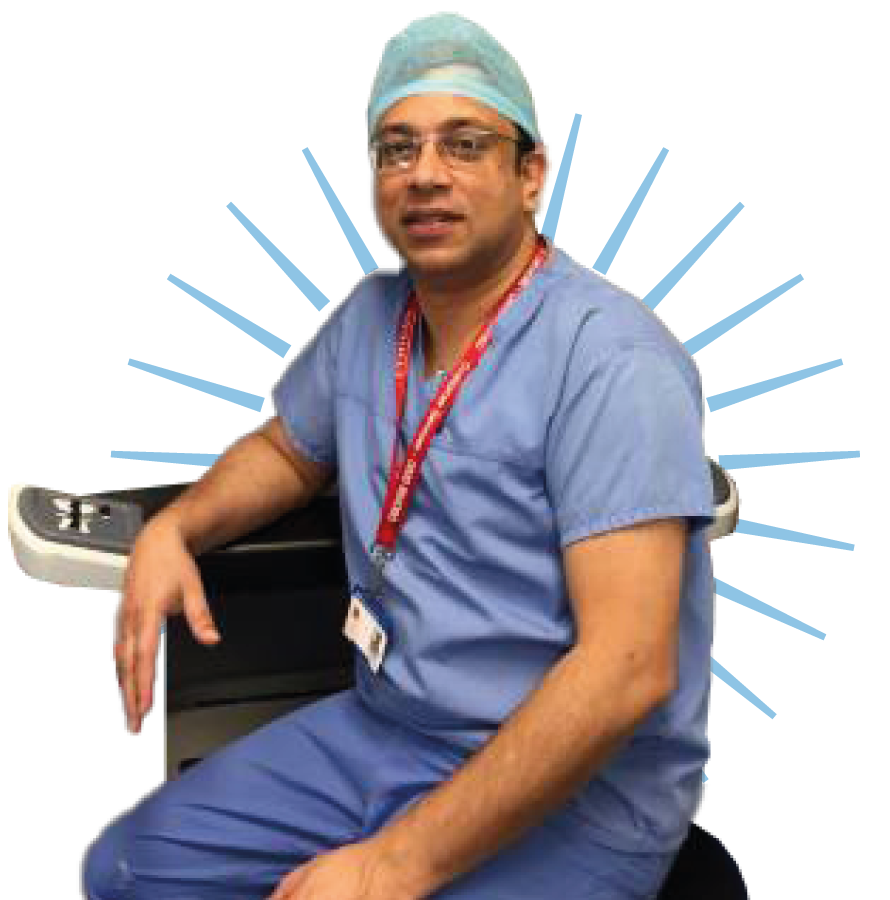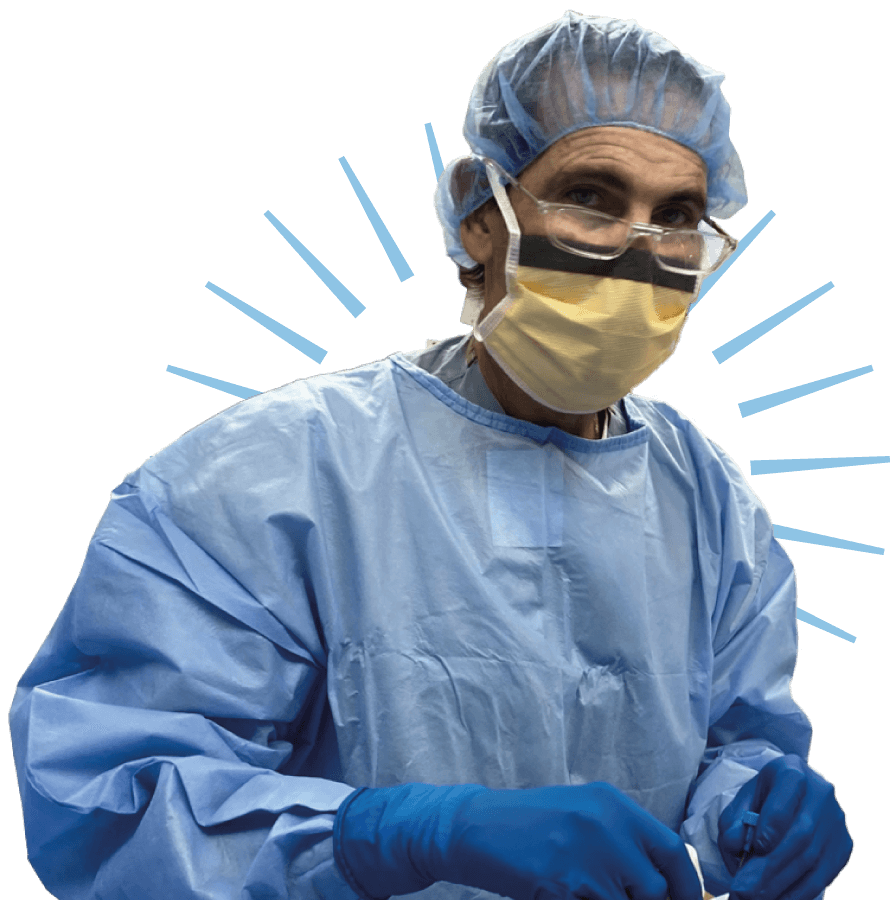Technology & set up
Ultravision™ technology is the only one in
its field that uses the proven process of electrostatic precipitation to eliminate surgical smoke.
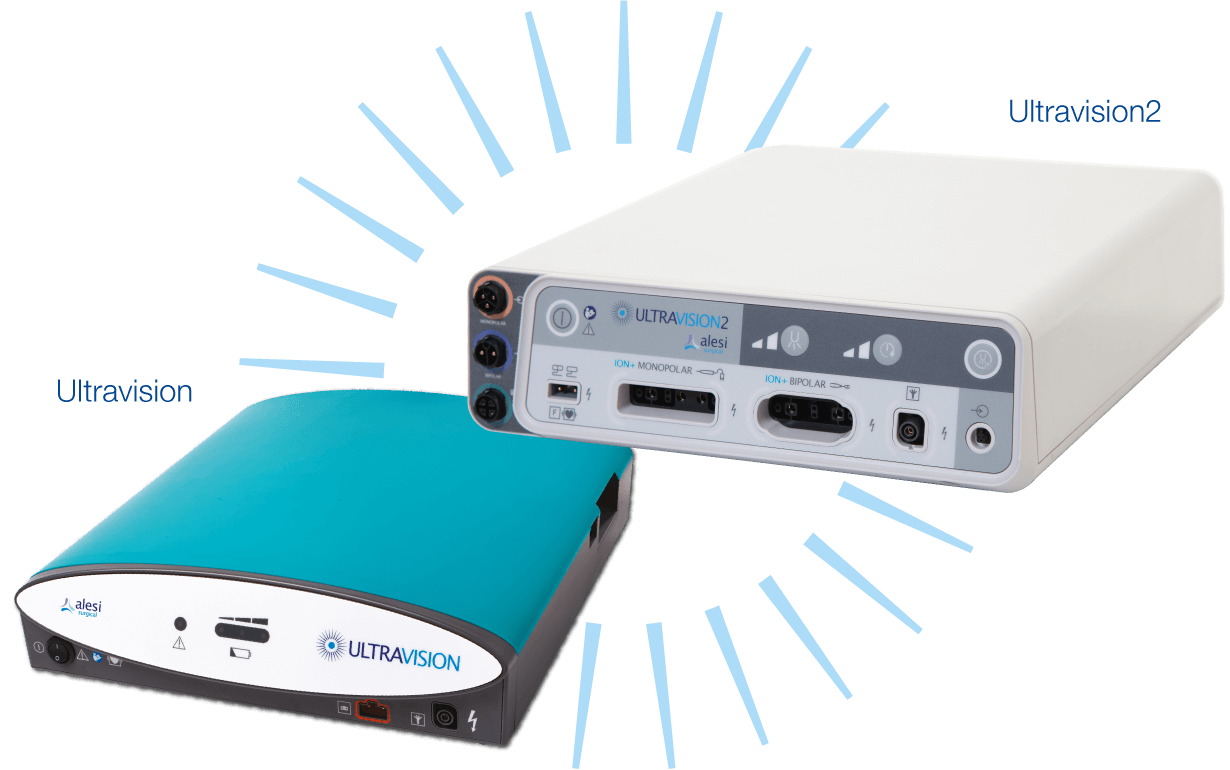
This unique mode of action delivers "advanced visualization": a continuously clear visual field, reduced camera cleaning, and stable pneumoperitoneum.
Ultravision also provides best-in-class control of bioaerosols, being 23-times more effective than smoke evacuators in minimizing the release of bioaerosols into the OR during surgery.*
*Source: Buggisch et al (2020)
How electrostatic precipitation works in laparoscopic surgery
The Ionwand™ creates negatively charged gas ions in the abdominal cavity, which move towards the “positive” patient tissue.
As the ions move, they collide with water vapour and particulate matter and draw them away from the surgical site. Particles land, and the electrical charge flows back to the generator.
The Ultravision™
differentiation
& paradigm shift
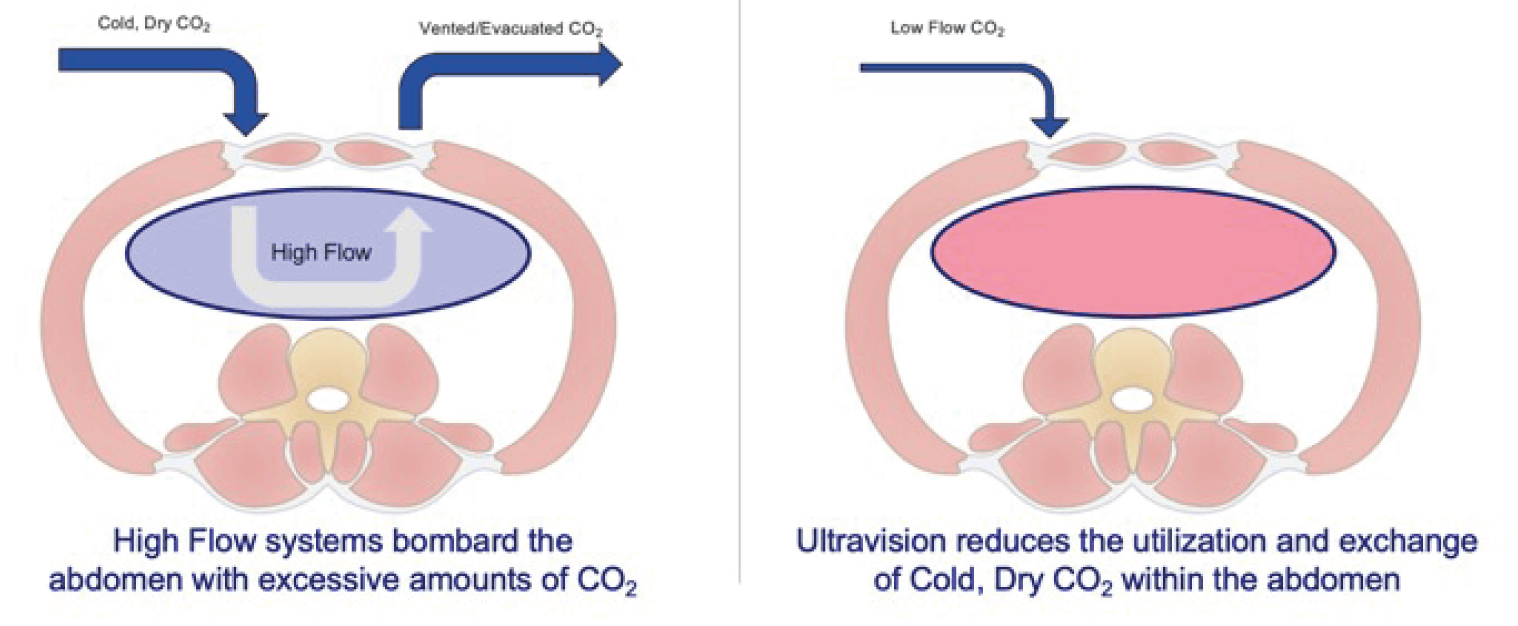
Standard smoke evacuation systems require a constant flow of CO2 in order to clear the visual field from surgical smoke. This requires excessive use of CO2, with potentially negative effects on the patient.
The electrostatic precipitation method enables a number of benefits including improved visualization, stable pneumoperitoneum, reduced camera cleaning, reduced exposure to surgical smoke; and the facilitation of low pressure, low flow surgery, which is associated with improved patient outcomes.*
Ultravision™ set up
Use of Ultravision™ (both Ultravision and Ultravision2) is straightforward and involves five simple steps: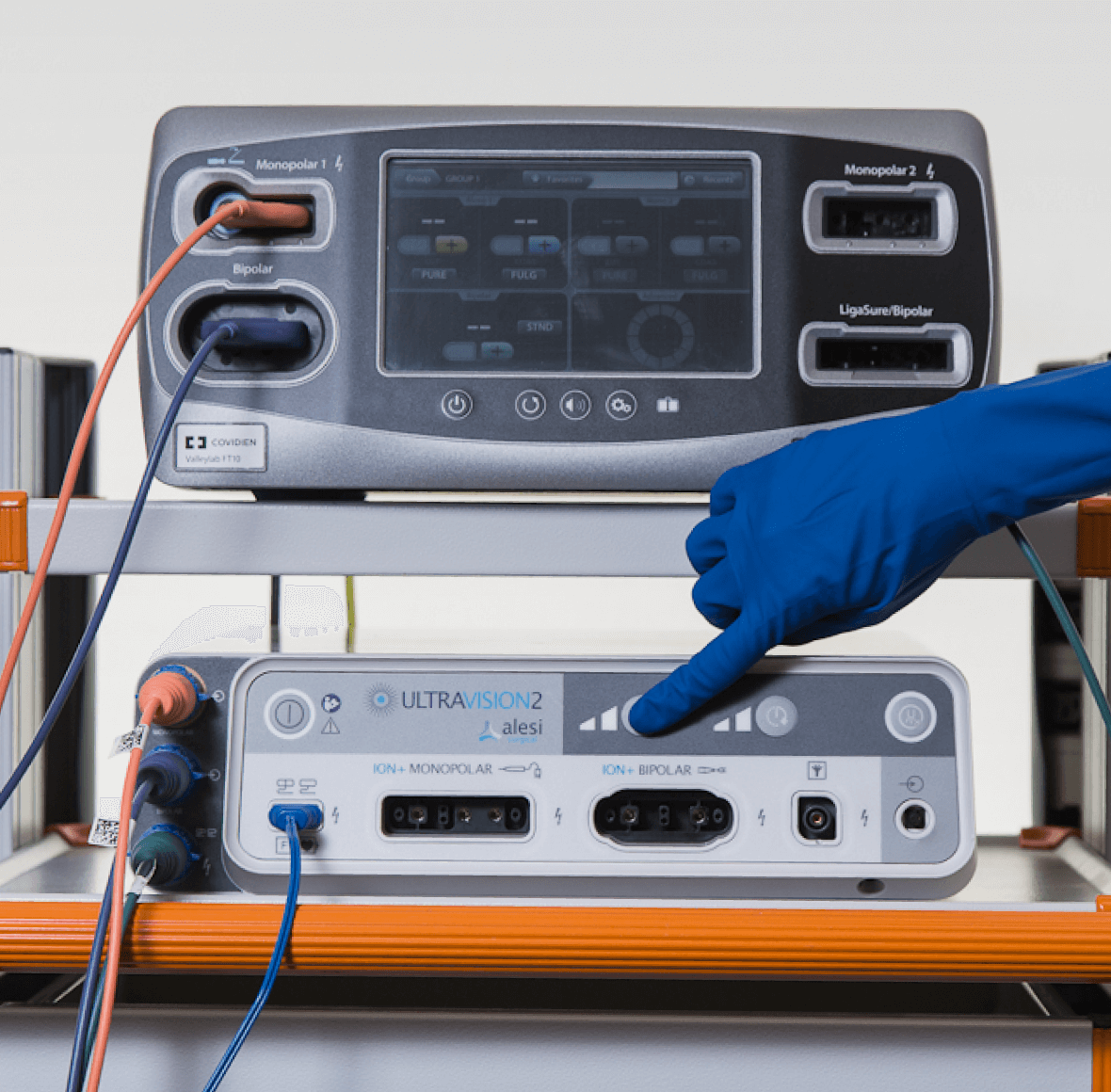
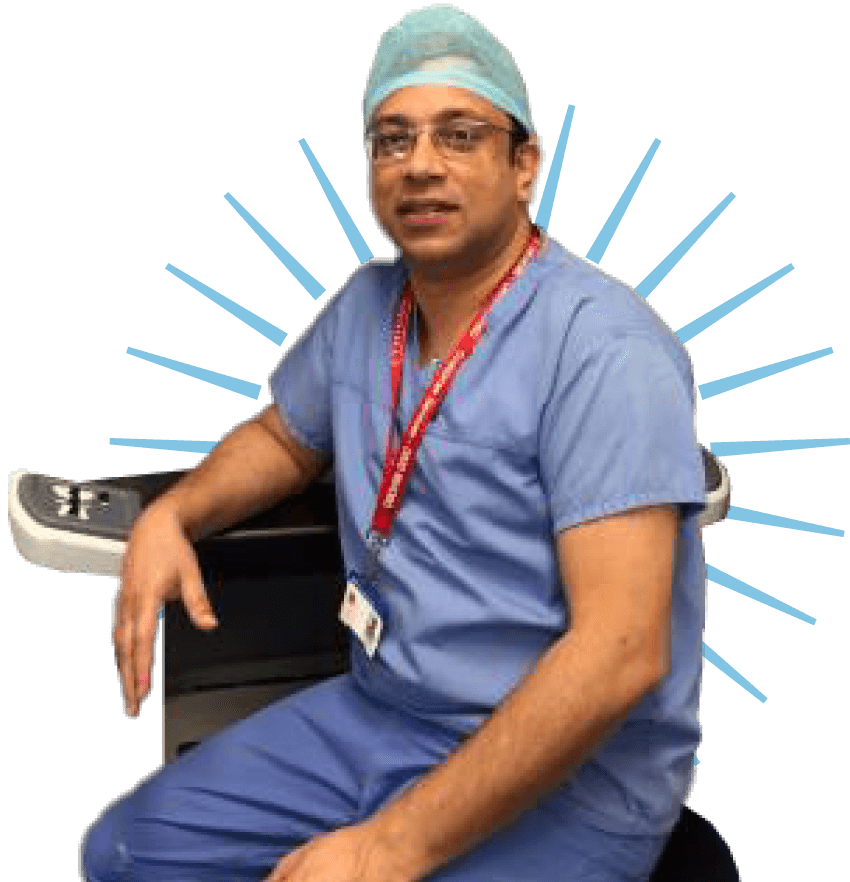
Ultravision™ is it is very easy to
set up, you just 'plug and play' Mr Gourab Misra, University Hospitals North Midlands, UK

